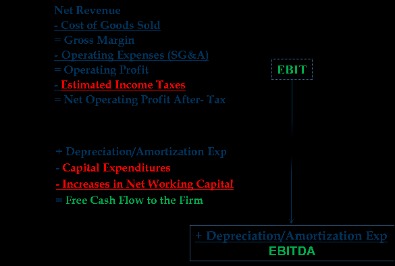
This can ultimately lead to more informed financial planning and strategic decision-making. Instead of directly recording these transactions as separate deposits into your bank account, you can use the Undeposited Funds account to record a lump sum deposit that will match your bank statement. As you can see above, my reconcile screen shows one deposit for those three payments and makes it easy for me to match with my bank.
Step 5: Record Cash Back & Print Your Bank Deposit
Timely deposits help in preventing discrepancies and errors and ensure that the financial records are in line with the regulatory requirements. This process is crucial for businesses to accurately track their received payments but process them as a lump sum deposit, reflecting real-world banking practices. After navigating to the Chart of Accounts, https://www.quick-bookkeeping.net/c-corporation-taxes/ the undeposited funds account can be created as a current asset. Chances are you will occasionally receive payments from multiple customers and batch those into one deposit. Posting these payments to the Undeposited Funds account will allow you to correctly record the deposit in QuickBooks Online, making reconciling your bank account easier.

What is the Undeposited Funds Account?
If you connect your bank and credit card accounts, QuickBooks automatically downloads all your transactions. You don’t need to combine downloaded transactions or use Undeposited Funds since QuickBooks already has the info from your bank. Put payments into the Undeposited Funds account until you’re ready to combine them.

QuickBooks Alternative For Small Business Owners and Freelancers
By utilizing undeposited funds, Quickbooks allows for the efficient aggregation of payments received, centralizing them before they are deposited into the bank. This streamlines the reconciliation process, as transactions are neatly organized, reducing the risk of errors and duplications. The use of undeposited funds enhances reporting accuracy by providing a clear distinction between received payments and actual bank deposits.
Pay close attention to the deposit amount and the account to which it is assigned. Make any necessary adjustments or additions to the transaction to ensure it aligns with your bank statement. If you come across any payments that should not be included in this particular deposit, leave them unchecked for now.
Mistake 1: Not Recording All Deposits in Undeposited Funds Account
After this, the funds are successfully moved from the undeposited account to the designated bank account in Quickbooks Online. I’d like to clarify how you connect your Clio account to QuickBooks Online. Did you connect your Clio account as a bank feds or through app integration on our QuickBooks Online App menu? That way, we’ll be able to give ways to match your Clio payment to your QuickBooks Online records. That’s why you don’t need to combine transactions or use Undeposited Funds because QuickBooks already has the information from your bank. When processing invoice payments through QuickBooks Payments for Desktop, QuickBooks takes care of everything and there’s no need to combine payments or move them to the Undeposited Funds Account.
Upon identifying unreconciled transactions, making necessary adjustments to rectify discrepancies and ensure the accurate alignment of recorded transactions with corresponding bank deposits is imperative. These adjustments contribute to the integrity of financial records and reconciliation. This systematic approach involves cross-referencing all transactions recorded in the undeposited funds account with the corresponding entries in the bank statement and online banking records. Any inconsistencies should be identified and rectified through adjustments, ensuring that the account accurately reflects the actual financial transactions. Recording deposits twice in the undeposited funds account is another common mistake that can lead to inaccuracies in financial records and reconciliation.
- Many people enjoy using QuickBooks because it’s easy to use, has robust features, and can grow with their company.
- This completes the process of moving the selected payments from the undeposited funds account to your bank account within your financial records.
- In other words, with more experience the tasks are done quicker and easier.
This step cements the accuracy and completeness of the reconciliation process. It’s imperative to verify that all payments received are accurately reflected in the system and properly reconciled with corresponding bank deposits. By regularly clearing out undeposited funds, businesses can maintain a clear and reliable trail of their financial transactions, promoting financial accuracy and transparency. adjusting entries By utilizing undeposited funds, you can ensure that all your customer payments are properly recorded and matched with the corresponding bank deposits. This helps to maintain accuracy in your financial records and simplifies the reconciliation process. It can cause confusion and discrepancies in financial statements, which may lead to incorrect tax filings or financial analysis.
It plays a pivotal role in maintaining financial transparency, aiding in the smooth functioning of the clearing process in QuickBooks Online. Remember, it’s essential to regularly review, organize, and reconcile your financial records to ensure their accuracy and integrity. If you encounter any discrepancies or have specific questions, consult with https://www.business-accounting.net/ a professional accountant or refer to the QuickBooks Online resources for further guidance. Double-check that the deposit to account in the transaction matches the appropriate bank account where the funds were actually deposited. In the bank deposit form, you will see a list of all the payments currently stored in your undeposited funds account.
If all the payments were successfully included in the bank deposit and cleared, you should observe a zero or near-zero balance in the undeposited funds account. Once the bank deposit is saved, QuickBooks Online will create a new transaction to represent the actual deposit into your bank account. This transaction should reflect the details you entered when creating the bank deposit, such as the date, deposit to account, and amount. If you notice any errors or discrepancies, take the time to correct them. You can edit the individual payment details within the bank deposit form by clicking on the respective field. If you have multiple bank accounts in QuickBooks Online, make sure to select the correct account that aligns with the undeposited funds you are clearing.
It is, however, useful for businesses that frequently get paid by check or cash and physically deposit the money to the bank instead of using mobile check deposits. Verifying the undeposited funds account is crucial in the process of fixing discrepancies, ensuring that all pending payments are accurately recorded and accounted for in QuickBooks Online. The reconciliation of accounts is a fundamental step in fixing undeposited funds in QuickBooks Online, ensuring that all financial records align with actual transactions and deposits. The process of clearing undeposited funds in QuickBooks Online involves several important steps to ensure accurate recording and reconciliation of payments.
To select a payment, check the box next to it in the bank deposit form. If you have organized your transactions in Step 2, this process will be more efficient, as you can easily identify and select groups of payments based on your organization criteria. Then, cross-referencing this information with the actual bank deposits helps to identify any discrepancies in the records. Don’t make the mistake of following the steps above and then forget to group your payments when you make your deposit. If you do this, you’ll end up showing your income as double, which of course, can cause problems for you and your company’s books. To see if this has occurred, check the balance in the undeposited funds account against the balance sheet report.
Doing so allows you to skip the longer workflow because each transaction gets processed as a single transaction, meaning there’s not a chance for it to show up as a lump sum payment on your bank statement. If your bank records a single payment as its own deposit, you don’t need to combine it with others in QuickBooks. Instead, you can put the payment directly into an account and skip Undeposited Funds. Now you can select an Undeposited Funds or another account each time you create a sales receipt. By default, QuickBooks puts sales receipt payments into the Undeposited Funds account. All you have to do is create a sales receipt and QuickBooks handles the rest.
These differences can significantly influence how businesses monitor their cash position and make informed financial decisions using the respective platforms. The interface for managing undeposited funds in Quickbooks Online is more intuitive, with a simpler, more user-friendly workflow when compared to the Desktop version. When you deposit the payments together at the bank, you record that in QuickBooks as well. If a customer paid with a check or their payment comes with a reference number, you can record that information in QuickBooks as well. Let’s sort this out so we can find a solution to the reconciled deposits showing on your Undeposited Funds (UF).
We began by explaining what undeposited funds are and why it’s essential to clear them regularly. Undeposited funds act as a temporary holding account for customer payments, providing a streamlined approach to manage cash flow and simplify your bookkeeping process. Keep in mind that the bank deposit represents the actual deposit made into your bank account, so it’s crucial to ensure that the information matches the transaction details reflected in your bank statement. If you find any discrepancies or errors in the listed payments, such as incorrect amounts or incorrectly recorded transactions, take a moment to correct them before proceeding. This will ensure that the bank deposit accurately reflects the payments you intend to deposit.
